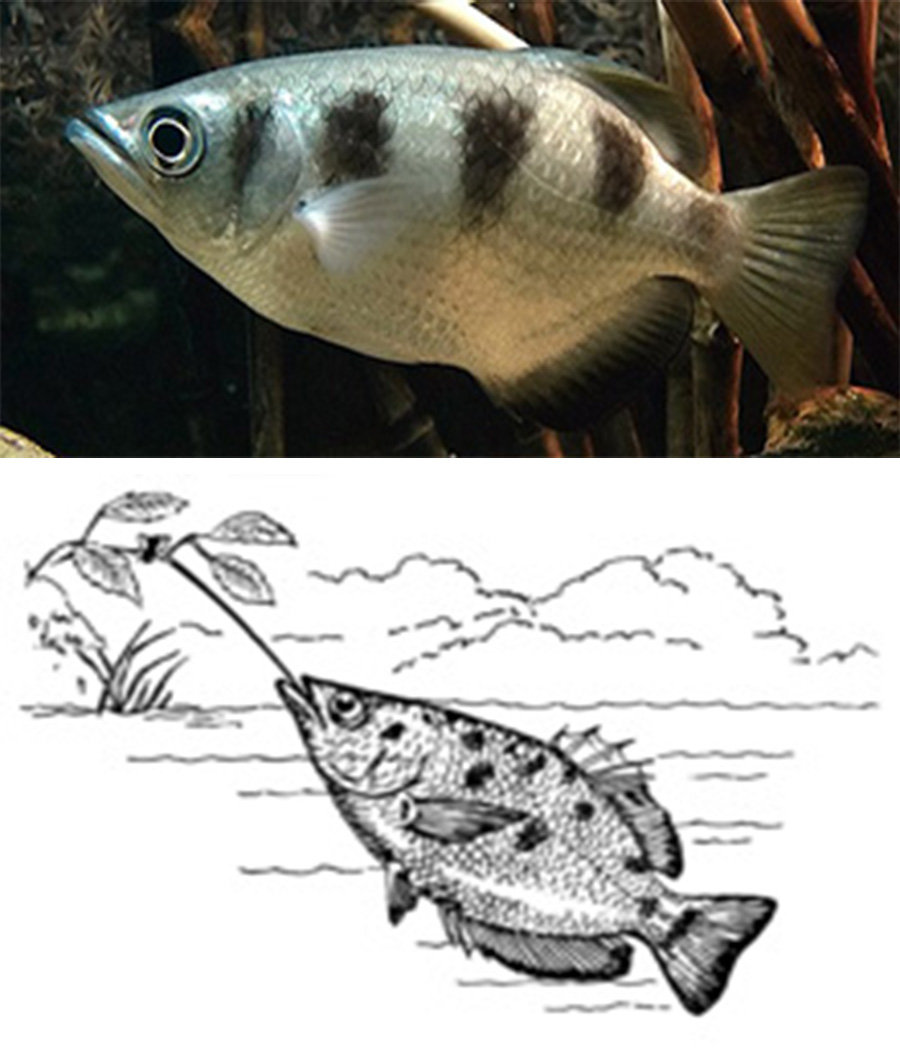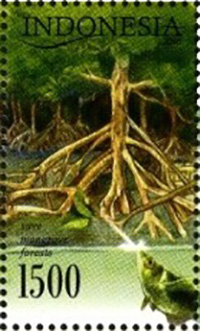Toxotes sp.

Foto: I, Chrumps
(Da: en.wikipedia.org)
Phylum: Chordata Haeckel, 1874
Subphylum: Vertebrata Lamarck J-B., 1801
Classe: Actinopterygii Klein, 1885
Ordine: Perciformes Bleeker, 1859
Famiglia: Toxotidae Cuvier, 1816
Genere: Toxotes Cuvier, 1816
Italiano: Pesce arciere
English: Archerfish
Français: Poissons archers
Deutsch: Schützenfische
Español: Peces arquero
Specie e sottospecie
Il genere attualmente annovera le seguenti specie: Toxotes blythii Boulenger, 1892 - Toxotes chatareus Hamilton, 1822 - Toxotes jaculatrix Pallas, 1767 - Toxotes kimberleyensis Allen G. R., 2004 - Toxotes lorentzi Weber, 1910 - Toxotes microlepis Günther, 1860 - Toxotes oligolepis Bleeker, 1876.
Descrizione
Il nome scientifico della famiglia deriva dalla parola greca toxotes, arciere: nome dovuto alla particolare tecnica di caccia di questi pesci. Tutti i toxotidi presentano corpo allungato (con ventre ampio) compresso ai lati, con una bocca molto larga e rivolta verso l'alto; occhi grandi: sono pesci dotati di un'acutissima vista. La pinna dorsale è preceduta da 3-5 raggi robusti. La colorazione dipende dalle specie ma anche dalla zona geografica, nella stessa specie e dall'età. In Toxotes jaculatrix la livrea presenta 4-6 bande nere verticali, che si restringono con l'età, su un colore di fondo bianco metallico. Le pinne sono orlate di nero, mentre la coda (ampia e a delta) è giallo-trasparente. Le dimensioni oscillano tra i 15 e i 40 cm. La riproduzione di queste specie non è molto conosciuta, se non per qualche esiguo studio: sembra che la deposizione delle uova avvenga in mare, vicino alle zone coralline e che i piccoli si raggruppino in banchi per meglio sopravvivere. Una volta cresciuti abbastanza rientrano verso le acque salmastre, sciolgono i banchi a favore di una convivenza più minuta e con spiccato comportamento territoriale. Sono pesci molto voraci, con carattere predatorio, che si nutrono esclusivamente di cibo vivo o comunque fresco. Il nome di Pesce arciere deriva dalla capacità che hanno questi pesci di emettere dalla bocca un violento getto d'acqua (che negli esemplari adulti può raggiungere 1,5 metri) per colpire gli insetti che sostano inconsapevolmente su foglie o rami vicini alla superficie dell'acqua.
Diffusione
Questi pesci sono diffusi nelle lagune e nelle zone costiere (soprattutto quelle coperte da mangrovie) dell'Asia (dal Golfo Persico alle Filippine, compreso l'arcipelago malese) e dell'Australia.
Bibliografia
–Maurice Kottelat; Tan Heok Hui (2018). "Three new species of archerfishes from the freshwaters of Southeast Asia (Teleostei: Toxotidae) and notes on Henri Mouhot's fish collections". Ichthyological Exploration of Freshwaters. IEF-952: 1-19.
–Arthington, A., and McKenzie, F. "Review of Impacts of Displaced/Introduced Fauna Associated with Inland Waters. Archived December 1, 2008, at the Wayback Machine" Environment Australia Archived April 25, 2009, at the Wayback Machine Australia: State of the Environment Technical Paper Series (Inland Waters), Series 1, 1997.
Froese, Rainer and Pauly, Daniel, eds. (2017). Species of Toxotes in FishBase.
–Johnson, G.D.; Gill, A.C. (1998). Paxton, J.R.; Eschmeyer, W.N. (eds.). Encyclopedia of Fishes. San Diego: Academic Press. p. 189.
–"Archer Fish (Toxotes jaculatrix)". liveaquaria. 2016-03-09.
–Douglas, M.M.; Bunn, S.E. & Davies, P.M. (2005-06-03). "River and wetland food webs in Australia's wet-dry tropics: general principles and implications for management" (PDF). Marine and Freshwater Research Vol. 56, No. 3, 329-342.
–""Plastic flies help spitting archer fish regain aim" Telegraph.co.uk". The Telegraph. 2002.
–Schuster, S.; Wöhl, S.; Griebsch, M. & Klostermeier, I. (2006-02-21). "Animal Cognition:, How Archer Fish Learn to Down Rapidly Moving Targets" (PDF). Current Biology Vol. 16, No. 4, 378-383.
–Temple, S. E. "Effect of salinity on the refracive index of water: considerations for archer fish aerial vision" 'Journal of Fish Biology' Vol 70.
–Temple, S.E., Hart, N. S., and Colin, S. P. "A spitting image: visual specializations of the arsherfish (Toxotes chatareus)" 'Brain Behaviour and Evolution' Vol. 73, 309 2009.
–Milius, Susan; October (2014). "Archerfish mouth reveals spit secret". Science News. 186 (7): 8.
–"Spit Decision: How Archerfish Decide". WIRED. 19 November 2013.
–Timmermans, P.J.A (2000). "Prey Catching in the Archer Fish: Marksmanship, and Endurance of Squirting At an Aerial Target". Netherlands Journal of Zoology.
–Jones, N. A. R., Webster, M. M., Templeton, C. N., Schuster, S., & Rendell, L. (2018). Presence of an audience and consistent interindividual differences affect archerfish shooting behaviour. Animal Behaviour, 141, 95-103.
–Davis, B. D., & Dill, L. M. (2012). Intraspecific kleptoparasitism and counter-tactics in the archerfish (Toxotes chatareus). Behaviour, 149 (13-14), 1367-1394.
–"New Scientist: Spitting archerfish shoot at prey above and beneath the water".
–Froese, Rainer, and Daniel Pauly, eds. (2017). "Toxotidae" in FishBase.
–Girard, M G; Davis, M P; Tan, H H; Wedd, D J; Chakrabarty, P; Ludt, W B; Summers, A P; Smith, W L. "Phylogenetics of archerfishes (Toxotidae) and evolution of the toxotid shooting apparatus".

|
Data: 05/06/2005
Emissione: Salvaguardia dell'ambiente Stato: Indonesia Nota: Emesso in un foglietto di 2 v. diversi |
|---|